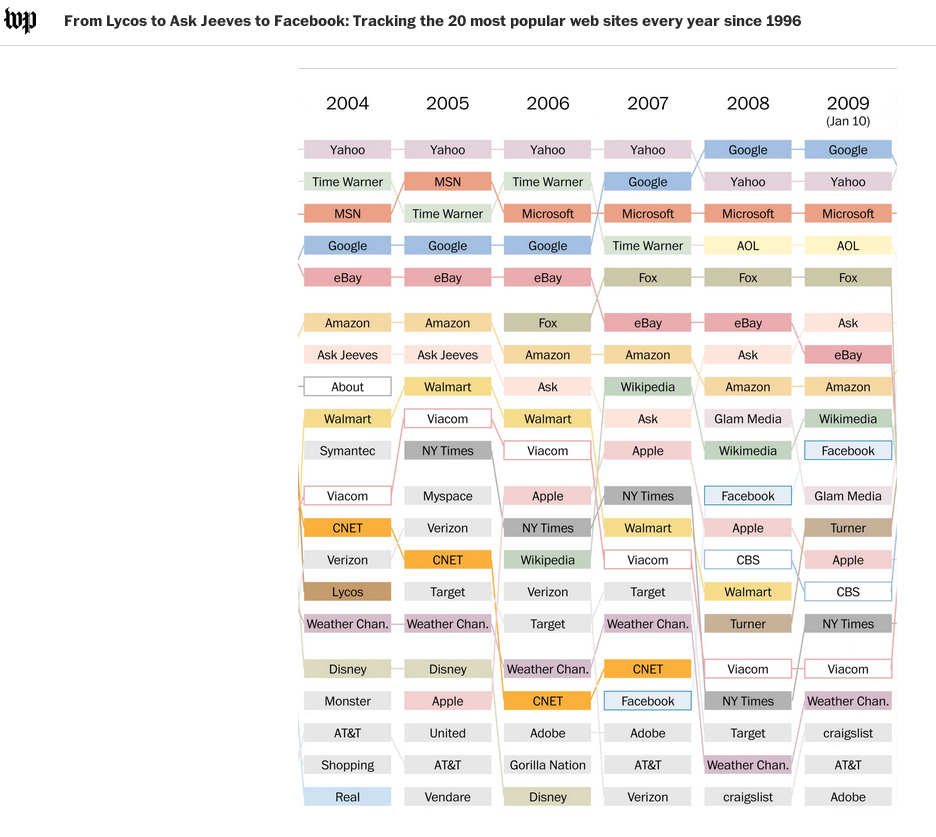How Google Changed the 20 Most Popular Websites Since 1996
Washington Post reporter, Philip Bump from The Intersect created infographics to show how websites have changed, “From Lycos to Ask Jeeves to Facebook: Tracking the 20 most popular web sites every year since 1996”, according to comScore.
According to Bump more interesting than when sites existed is how the infographics show when sites became and stopped being popular. What might be most interesting to geospatial professionals are changes that started to happen with the introduction of geo-browsers and Web 2.0 o. Starting with Google’s API in 2005, location-based technologies gave non-professional geographers access to geospatial tools, namely through the Internet. A call for papers for The Geospatial Web book in 2006 said that by integrating cartographic data with geo-tagged knowledge repositories, the emerging Geospatial Web will revolutionize the production, distribution and consumption of media products. In their contributed book chapter Participating in the Geospatial Web, L. Jesse Rouse, and Susan Bergeron said that “In 2005, Google, Microsoft and Yahoo! released free Web mapping applications that opened up digital mapping to mainstream Internet users. Importantly, these companies also released free APIs for their platforms, allowing users to geo-locate and map their own data.” An act that might explain the seemingly out of the blue success of Google.
Using the websites listed in the infographics it is possible to trace the introduction of geo-spatial technologies to every day life. While at first websites might have been using geospatial technologies on the back end, Google pushed the boundaries of location-based services and it is difficult to find a top 20 website, like Ebay, Amazon, Facebook and the Weather Channelcom that doesn’t integrate the geospatial into their services. Even comScore, the website used to produce the data provides the comScore Census Network virtual interactive globe which shows digital interactions in real time. It is probable that in 2015, advances in geospatial technologies and location-based services will continue to change what the public expects from a website.

